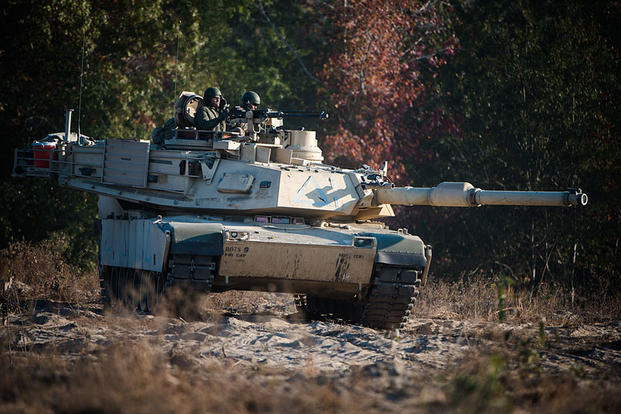Instructors at the U.S. Army's Armor Basic Officer Leaders Course said they would serve under the first 13 female lieutenants who graduated the course "in a heartbeat."
"They blew us away during our field training exercises," said Staff Sgt. William Hare, an instructor at the course. "Their ability to plan, adapt on the fly and execute that plan in a clear and concise manner and communicate plan changes on the go -- it was amazing."
Hare was among a handful of instructors and leaders who spoke to reporters about the first gender-integrated class of ABOLC that graduated 53 male and 13 female officers at Fort Benning, Georgia, on Thursday.
Two women and six men did not meet the standards and will recycle, Benning officials said. Two males were medically dropped from the course.
This is the latest step in the Army's effort to integrate women into combat arms jobs such as armor and infantry.
In late October, 10 female lieutenants graduated from the first gender-integrated class of Infantry Officer Basic Leaders Course at Benning.
And in August 2015, Capt. Kristen Griest and 1st Lt. Shaye Haver became the first women to graduate Army Ranger School. Maj. Lisa A. Jaster became the third woman to graduate from Ranger School two months later.
Defense Secretary Ash Carter in December 2015 ordered all military jobs, including special operations, opened to women. His directive followed a 2013 Pentagon order that the military services open all positions to women by early 2016.
Thursday's graduation of the 13 female officers from ABOLC is "consistent with what you have seen over the last 18 months," said Maj. Gen. Eric Wesley, commanding general of the Maneuver Center of Excellence at Benning.
"We always knew that when we entered this effort that we wanted the process to be standards-based," Wesley said. "In the case of Ranger School, we wanted to make sure there were clear objective standards to determine qualification to become a Ranger. In terms of IBOLC the same thing -- it was all standards-based. And now, in the armor community, we have done the same thing."
The 13 female graduates performed as well as their male counterparts on the High Physical Demands Test, a series of tasks designed to validate that any soldier serving in an MOS has "the right physical attributes to perform in that particular military occupational specialty," said Brig. Gen. John Kolasheski, commandant of the Armor School at Benning.
"It's gender-neutral, and they performed at the same rate as their male peers in all of those tasks."
The new graduates now will go to the Army Reconnaissance Course at Benning. After that, some will go to Airborne School and Ranger School before being assigned to operational units, Benning officials said.
Once they leave Benning, female combat arms officers are being assigned to Fort Hood, Texas, and Fort Bragg, North Carolina.
Staff Sgt. George Baker, another instructor at ABOLC, said he had his doubts initially about women in the armor community.
"There was some skepticism at first, just to see can they do it … but as soon as they started performing to those same standards -- because we didn't change anything and they performed to those same standards, and they met and exceeded those same standards -- it solidified that they have a place here," Baker said.
-- Matthew Cox can be reached at matthew.cox@military.com.



























